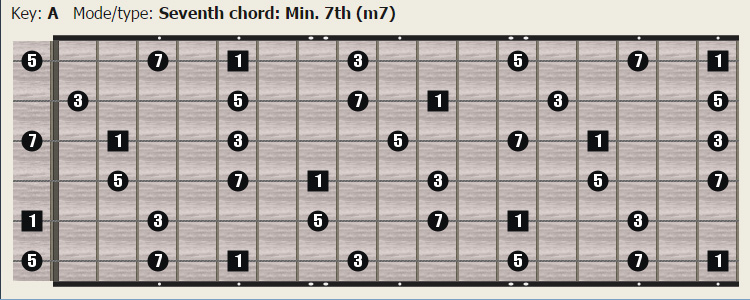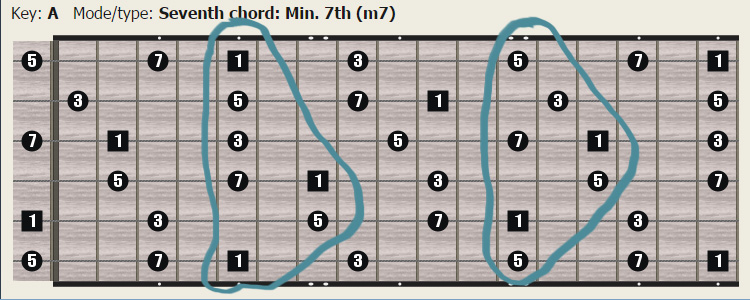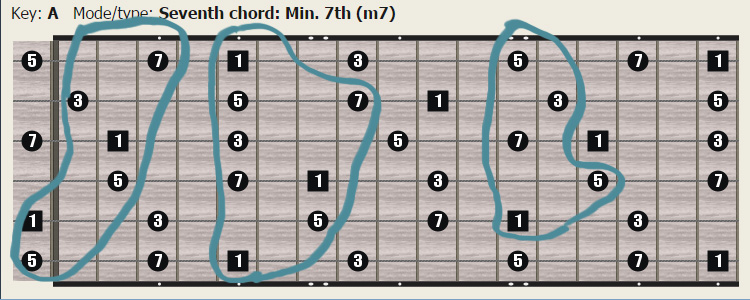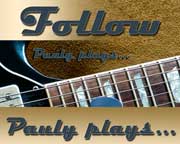The Guitar Fretboard Explorer
The Fretboard Explorer is an old tool (as you can tell from looking at it) that displays a wide variety of scales and chords. It is a learning tool rather than a chord look-up tool. It doesn't have chord charts or try to show every variation. Instead, it shows a 17-fret guitar neck with symbols on it that indicate how a scale or chord could be built on it.
The original page is very poorly documented. Hopefully these pages will explain enough to easily get you started. Just play with it. The most commonly used features are covered here. It is easiest to do with an example.
Exploring the A minor seventh chord
When it comes to chords, the Fretboard Explorer is more of a "build your own" tool. It shows where all the notes are that make up the chord. You can then pick whatever group of them you like to play the chord.

Figure 1 shows the result of selecting the "Minor 7th" button while the key of "A" is selected. There are 3 display options for the dots, and "Numbered" was selected in this picture.
The number refer to the notes in the scale. In some cases, a best effort guess is made, but for basic chords and scales the degree of the scale is a perfect match. What do the numbers mean in this image?
- 1 — the root of the chord and scale. In all three display types the root is drawn with a box instead of a circle.
- 3 — the third of the chord and scale. In the Enhanced display, the 3 is a large, lightened circle.
- 5 — the fifth of the chord and scale. In the Enhanced display, the 5 is a large, dark circle.
- 7 — the seventh of the chord and scale.
A seventh chord can be build by playing each of the 4 note types in any position on the neck. Multiple notes are common.

Take a look at figure 2, where two common chords are circled. The A minor (not A minor 7) on the left is using the standard barred-E shape on the fifth fret.
One of the biggest difficulties people seem to have in understanding the display is remembering that the "nut" is on the left side and that if open strings are played there will be indications to the left of the main fretboard.
Because of that, the commonly played A minor is circled on the 12th fret as a barre chord. One octave lower, the same notes exist in the same pattern if the open strings (to the left of the heavy line) are used.

Figure 3 shows three ways to play Am7 chords. The middle one might be more commonly played by not playing the root (1) note on the D string, but either way works.
The C within the A minor seventh chord

Finally, Figure 4 shows that the same display can be used to build some C major chords. (The key of A is the relative minor of C. Take a look at the article "relatives with minors".)
You could also use the Fretboard Explorer to select the key of C and click on the "Major Triad" button. That would highlight those same notes but also renumber the notes so the root would be in the proper place. Then clicking the "Last" button would return to the previous display, showing Figure 1. Repeatedly clicking the "Last" button will alternate between the two displays, helping you spot similarities and differences.
Next: the controls
Learn about how the buttons work by going to the Fretboard Explorer's controls page.


